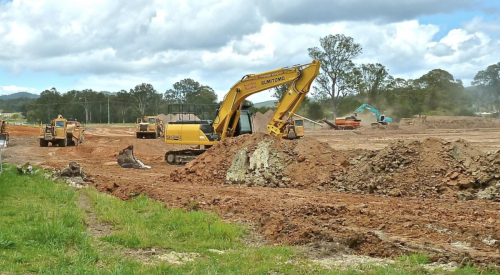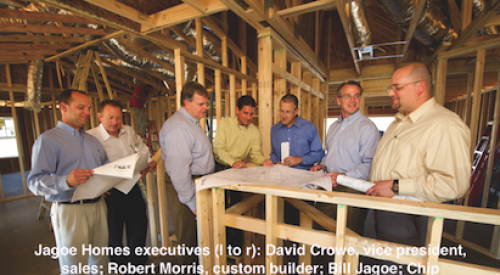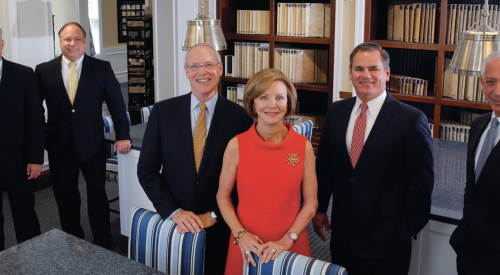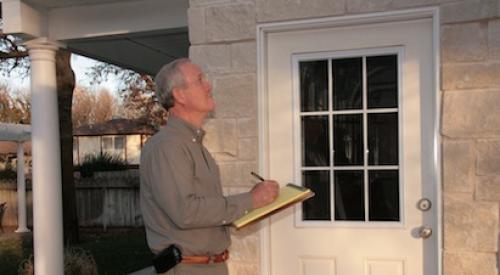|
Company Profile
Name: Colorado Signature Homes Location: Colorado City, Colo. Principals: Richard and Scott Van Schaardenburg Company Type: design/build custom home builder; also some remodeling, kitchen/bath design and cabinetry Employees: one bookkeeper/office manager, one draftsperson/purchasing agent, six carpenters 2003 Jobs: five custom homes from 3,200 to 5,000 square feet and priced from $260,000 to $500,000 (without land) |
What can we learn from a past kingpin in one of America's largest and most competitive housing markets, who now sits in quiet contemplation of nature - 9,200 feet above sea level?
Probably that retirement rarely works for a builder. Maybe that six ex-wives is at least one too many. But also, perhaps, that you can make money building houses just about anywhere if you know how to write a business plan, execute it and delight customers along the way.
Track Record of Excellence
Richard Van Schaardenburg, 64, made and lost his first fortune building houses in Champaign, Ill., in the 1970s and then moved to the Chicago area as sales manager for Town & Country Homes. Within four years he was president, and he led Town & Country right through the 1981-82 recession. "Chicago went from 38,000 housing starts down to 4,000," he says. "That recession taught me how to survive by finding niche locations where competitors couldn't match our value."
Town & Country was the No. 2 builder in Chicagoland when Van Schaardenburg moved to No. 1 Lexington Homes as president in 1990, just in time for another recession. Owner Focus Financial soon defaulted to its lender, Westinghouse Credit Corp., which installed Van Schaardenburg as chairman. "We were number one, building 1,000 homes a year but losing $3 million a month," he says. "By 1993 we broke even. We turned a profit in 1994."
A year later, Westinghouse sold Lexington to Cambridge Homes. Van Schaardenburg retired with a healthy golden parachute. "I got 10% of the increased value from the time I took over until it sold."
Mountain Climbing
After touring the country for two years with wife No. 6 (in a $1.2 million, custom-fitted bus), Van Schaardenburg landed in divorce court, and later in Pueblo, Colo. "I had a consulting assignment to get entitlements and zoning for a project there. I fell in love with the mountains, bought some land and started building a house 50 miles southwest of Pueblo."
A man soon approached Van Schaardenburg and asked him to build another house, and he finished that custom home before finishing his own. However, before either house was complete, Van Schaardenburg's son Scott, now 32, showed up with his young family, fed up with his career as an engineer in Seattle, ready to build his own home next door to his father's and asking Van Schaardenburg to help him build a business as well.
"Scott's interest is more in design than engineering," Van Schaardenburg says. "I'd already founded Colorado Signature Homes with the idea of building one or two houses a year. But Scott's design talent really fits the market I saw emerging - wealthy baby boomers building second homes to retire in the mountains or just moving here to fulfill their dreams even before reaching retirement age."
A New Challenge
| One-of-a-kind custom homes in the southern Colorado Rockies, such as this 3,400-square-foot, $500,000 gem, are the kind of design/build projects in which former Chicago builder Richard Van Schaardenburg and son Scott now specialize. |
Building a company with Scott put wind in Van Schaardenburg's sails, even in the face of challenges. "There's no labor supply where we are," he says. "Trade contractors live 50 miles away in Pueblo. We hire carpenters just to have a company. Some of our jobs are 85 miles out in the middle of nowhere. We did one house where our employees moved on site and lived in trailers for four months."
Van Schaardenburg acknowledges he had to tone down his high-energy management style to deal with his employees' laid-back approach to work. "They all moved to the mountains for the lifestyle," he says. "They like to do good work, and I appreciate that. What I have to adjust to is that no one wants to be hurried."
Still, the Van Schaardenburgs now occupy a niche with no direct competitors, even in Pueblo, where the home builders association has hundreds of members. "We're a one-stop shop," Van Schaardenburg says. "We can design our clients' dream homes to a budget. We start with a 'design kit' that really inventories their lifestyle - how they plan to use the property and live in the house. Having a licensed engineer as designer is a real advantage because where we build, the snow and wind loads change at different elevations, and every house has to have an engineered foundation plan because of the expansive soils."
Small but Thinking Big
Every builder needs a niche, Van Schaardenburg says, a unique selling proposition that others can never quite match. "Unlike most small builders, we have a written business plan, amended each year," he says. "And I insist on meticulous record keeping. We work with an off-the-shelf construction software system, but it allows us to generate purchase orders.
"We cost out everything we do, in every area, as if we were a much larger business. We keep close track of our financials and track our performance against Chuck Shinn's target financial ratios. We need more volume to get to where he wants us. We're at 22% gross margin, and our net is in line with what Shinn says most builders are making. The redeeming value is that our margins are safe because of our business model."
Cost-Plus Model, Own No Land
That model requires CSH to build only on the customer's lot. The firm owns no land. Cash flow is also rock steady because CSH works on a cost-plus basis. "We have to operate on slightly lower margins because of that," Van Schaardenburg says. "We can't push our margins until the demand for our services exceeds our capacity. To get there, we have to spread our geographic coverage and land more high-profile jobs that build our reputation for quality in both design and construction."
About half of CSH's clients take out construction loans. "The others pay us as construction proceeds, out of their pockets," Van Schaardenburg says. "We ask for a deposit on Scott's design work but not on construction. We bill them as the work progresses. We're never out more than two weeks on our own tab."
The design portion of the firm is a separate entity, Van Scott Design LLC. "Our overhead is driven up by the design business," Scott says, "so we separate it into its own profit center. In two years, we should have our construction business up to $5 million or $6 million in volume. Then as our design reputation builds, we'll try to spread operations into more affluent markets in Colorado but without changing the consultative nature of our design process or the on-your-lot model."












